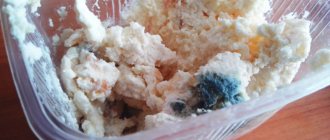GENERAL OCCUPATIONAL SAFETY REQUIREMENTS
1.1. Chemical reagents are pure substances, their solutions, mixtures or compositions of strictly regulated composition, used for scientific research and chemical analysis. They are produced in a form that ensures reliability and ease of use. 1.2. A chemical reagent is a substance that can be used to qualitatively detect or quantitatively determine another substance. Using chemical reagents, it is possible to carry out qualitative analysis, i.e. detect individual elements, groups of elements or entire molecules that make up the substance under study, and quantify the content of individual components of the substance under study. 1.3. The main requirement for a chemical reagent is its purity. It must not contain impurities that would interfere with or preclude accurate analytical testing. 1.4. Many chemical reagents are poisonous, flammable, and explosive; therefore, precautions must be taken when working with them. 1.5. Personal protective equipment (PPE) is equipment used by an employee to prevent or reduce exposure to harmful and hazardous production factors, as well as to protect against pollution. They are used in cases where work safety cannot be ensured by the design of equipment, the organization of production processes, architectural and planning solutions and collective protective equipment. 1.6. Primary fire extinguishing means are devices, tools and materials designed to localize and (or) eliminate a fire at the initial stage (fire extinguishers, internal fire hydrant, water, sand, felt, asbestos sheet, bucket, shovel, etc.). These funds should always be ready and at hand. 1.7. The main requirement for employees of chemical reagent warehouses is knowledge of and strict compliance with labor protection, industrial and fire safety requirements. 1.8. Warehouse maintenance personnel must know and comply with the requirements set out in these instructions. 1.9. Persons over 18 years of age are allowed to work independently after undergoing introductory briefings on labor protection, industrial and fire safety, initial instruction in the workplace, internship and testing of theoretical knowledge and practical skills of safe working methods in the qualification commission of the enterprise. 1.10. Repeated instruction is carried out at least once every six months, and repeated knowledge testing by the qualification commission is carried out once a year. 1.11. Compliance with the requirements for the safe storage of chemical reagents eliminates the possibility of accidents, emergency situations, fires, fires. Every warehouse worker must know the fire hazard and toxic properties of chemicals, the rules for their joint storage, and safe handling techniques. 1.12. Responsibility for violation of the requirements of this instruction lies with the violator and the head of the unit in accordance with current legislation. 1.13. It is prohibited to stay on the territory of the enterprise while intoxicated, as well as to perform work duties in a state of alcoholic or drug intoxication.
GENERAL RULES FOR STORING CHEMICALS IN WAREHOUSES
2.1. Warehouses intended for storing chemical reagents must be closed (heated and unheated), semi-closed, dry, well ventilated, protected from precipitation, have adequate lighting and be kept clean. Waste packaging material and garbage must be collected in specially designated areas and removed periodically. 2.2. Chemical reagents must be supplied to warehouse storage in serviceable packaging (containers) in accordance with the requirements of regulatory and technical documentation. It is prohibited to store reagents in defective containers. 2.3. If faulty packaging (container) is detected when receiving chemical reagents or during storage, the faulty packaging (container) must be immediately removed from the warehouse and transferred to the packaging area for repacking or to a temporary storage place for further destruction. 2.4. Each package (container) must have a clear inscription: a tag, tag or label indicating the name of the chemical reagent, release date, manufacturer, expiration date and, if necessary, a danger sign. It is prohibited to store chemical reagents without inscriptions and labels. If inscriptions and labels are missing, the warehouse manager (storekeeper) must restore them. 2.5. Chemical reagents must be stored in groups depending on their fire hazard (in accordance with the requirements of GOST 12.1.004), toxic properties, chemical activity (the assignment of chemical reagents to the corresponding group of joint storage is given in the tables, see Appendices). 2.6. Stored chemical reagents should be carefully arranged or stored in designated areas in such a way as to ensure easy access to any reagent, its observation, and loading. 2.7. Dry chemicals packed in bags should be stored on pallets in stacks no more than 2 meters high (for mechanical stacking, the stack height can be increased to 3.5 m). 2.8. Chemical reagents in small packaging should be stored in secondary containers (boxes, boxes) or on racks. Secondary containers are stacked. Shelving must be located at least 1 meter away from walls and heating systems. The aisles between the racks should provide easy access to them. 2.9. Bottles with liquid reagents must be stored in serviceable crates in groups of 100 pieces in two rows, 50 bottles in each group, between groups of bottles there must be a passage at least 1 meter wide. 2.10. The canisters should be laid in two rows; there should be a solid gasket between the canisters (for acids, a gasket made of special acid-resistant materials is used). 2.11. Place boxes with bottles and cans in tiers so that the height of the stack is no more than 1 m from the floor. 2.12. Liquid chemicals that freeze in winter should be stored in heated warehouses (see Table 6). 2.13. It is allowed to store liquid acids that do not freeze in winter in outdoor areas protected from exposure to sunlight and precipitation. 2.14. When entering a warehouse where liquid chemical reagents are stored, you must ensure that there are no spilled reagents on the floor, and if any are found, carefully move the damaged container into an emergency container and then remove it from the warehouse. 2.15. All passages, driveways, entrances to storage facilities, emergency exits, passages to fire extinguishing equipment and fire equipment must always be free. 2.16. Loading, unloading and transportation of chemical reagents must be carried out in safe, convenient ways that exclude the possibility of injury, physical strain, and the possibility of intoxication in accordance with current instructions for carrying out loading and unloading operations. 2.17. Do not store any items or equipment in hallways, stairwells, or under stairwells. 2.18. It is prohibited: discharging chemical reagents into sewers, even in emergency situations. 2.19. It is prohibited to open barrels, drums and other packages with chemical reagents in the warehouse. 2.20. After the expiration of the shelf life of chemical reagents indicated on the label (tag, sticker, etc.), it is necessary to notify the head of the department to organize an analysis to determine the compliance of the chemical reagent with the requirements of regulatory and technical documentation. 2.21. Based on the results of the analysis, the expiration date of the tested reagent is determined, its requalification is determined, or a write-off and destruction report is drawn up. 2.22. Reagents that do not meet the requirements of regulatory and technical documentation and are not subject to sale must be removed from the warehouse to a temporary storage site and subsequently subject to destruction in the prescribed manner. 2.23. Use in warehouses and open fire areas is prohibited. 2.24. It is prohibited to eat food in storage areas. 2.25. Smoking is prohibited on the warehouse premises. Smoking is permitted only in specially designated areas marked “Smoking area.” 2.26. It is prohibited for unauthorized persons to be in the warehouse premises, incl. clients. 2.27. It is prohibited to involve clients in loading and unloading operations when receiving and dispensing reagents. 2.28. Signs indicating the person responsible for fire safety and instructions for workers must be posted in all warehouse premises.
Legislative framework of the Russian Federation
valid Editorial from 04.09.2003
detailed information
| Name of document | “SAFETY TECHNIQUES WHEN WORKING IN ANALYTICAL LABORATORIES (GENERAL PROVISIONS). GUIDELINES. PND F 12.13.1-03" (approved by the Federal State Institution "Center for Environmental Control and Analysis" 04.09.2003) |
| Document type | methodological recommendations, list |
| Receiving authority | Ministry of Natural Resources of the Russian Federation |
| Document Number | PND F 12.13.1-03 |
| Acceptance date | 01.01.1970 |
| Revision date | 04.09.2003 |
| Date of registration with the Ministry of Justice | 01.01.1970 |
| Status | valid |
| Publication |
|
| Navigator | Notes |
“SAFETY TECHNIQUES WHEN WORKING IN ANALYTICAL LABORATORIES (GENERAL PROVISIONS). GUIDELINES. PND F 12.13.1-03" (approved by the Federal State Institution "Center for Environmental Control and Analysis" 04.09.2003)
5. RULES FOR THE SAFE STORAGE OF CHEMICAL REACTIVES
5.1. General provisions
5.1.1. Laboratory supplies of reagents must be stored in specially equipped, well-ventilated, dry rooms (warehouses) in accordance with the reagent placement scheme developed in the laboratory.
5.1.2. When placing reagents in warehouses, the procedure for joint storage of flammable and explosive substances must be strictly observed. Shared storage of reagents that can react with each other to release heat or flammable gases is not permitted. It is also prohibited to store together substances that, in the event of a fire, cannot be extinguished with one fire extinguishing agent.
5.1.3. It is prohibited to package bulk substances in a warehouse.
5.1.4. The basic rule when storing and selecting reagents is to protect them from contamination.
5.1.5. All bottles of reagents must have labels indicating the name, qualification and expiration date [13].
5.1.6. Reagents that cannot be stored in glass containers are placed in containers made of materials that are resistant to the action of this reagent. For example, hydrofluoric acid and alkalis are stored in polyethylene bottles.
5.1.7. Reagents that decompose or change their properties when exposed to light (for example, diethyl ether, peroxides, silver salts) are stored in dark or yellow glass bottles.
5.1.8. Hygroscopic substances and substances that oxidize upon contact with air must be stored in airtight containers. Paraffin is used to seal stoppers.
5.1.9. Spent reagents must be poured into separate bottles for subsequent processing or transfer to organizations involved in the disposal of chemicals.
It is prohibited to pour concentrated acids, alkalis, toxic and flammable substances into the sewer system!
5.2. Storing chemical reagents in the laboratory
5.2.1. In work premises it is allowed to store non-volatile, non-flammable and low-toxic solids and aqueous solutions, diluted acids and alkalis, in quantities necessary for analysis.
5.2.2. Concentrated acids in a volume of no more than 2 cubic meters. dm are stored in glass containers with ground glass lids or plastic stoppers in a desiccator or glass container with a lid in a fume hood. For better sealing, put on rubber caps.
5.2.3. Concentrated solutions of alkalis are stored in a fume hood, separate from acids, in plastic containers. Ammonia is stored together with alkalis.
5.2.4. Storage of flammable liquids (flammable liquids) is allowed in thick-walled bottles equipped with sealed stoppers with a capacity of no more than 1 cubic meter. dm, especially dangerous flammable liquids - in an amount not exceeding the daily requirement (Table 1). Bottles with flammable liquids are placed in special metal boxes away from heat sources and oxidizing agents (chlorates, nitrates, nitric acid, hydrogen peroxide, permanganates).
Table 1
MAXIMUM PERMISSIBLE VOLUME (LVV) ALLOWED FOR STORAGE IN WORK PREMISES
| Substance | Volume, cubic dm | Substance | Volume, cubic dm |
| Acetone | 0,5 | Xylene | 5,0 |
| Petrol | 0,3 | Carbon disulfide | 0,15 |
| Benzene | 0,5 | Toluene | 2,0 |
| Butanol | 5,0 | Acetic acid | 5,0 |
| Hexane | 0,3 | Cyclohexane | 5,0 |
| Dichloroethane | 3,0 | Ethanol | 2,0 |
| Diethyl ether | 0,2 | Ethyl acetate | 1,0 |
| Kerosene | 5,0 |
5.2.5. Carbon tetrachloride and chloroform are stored in the lower compartment of the fume hood.
5.2.6. Bottles with concentrated bromine are stored in a box or plastic jar with asbestos sheets in a locked safe. Bromine water is stored in bottles with caps; in the absence of caps, storage in a desiccator with a ground-in lid in a fume hood is allowed.
5.2.7. Organic substances with a strong irritating odor (pyridine, isoamyl alcohol, etc.) are stored in bottles, well sealed with stoppers with rubber caps.
5.2.8. Metallic mercury and other toxic substances (Appendix 3) are stored in locked cabinets (safes) in strict accordance with the instructions for their storage.
5.2.9. Caustic substances (iron trichloride, iodine, triethanolamine, valeric, propionic and other organic acids) are stored in glass containers with ground stoppers in a metal box under a fume hood. For better tightness, rubber caps are put on the plugs.
5.3. Rules for storing flammable reagents
Fire hazards include flammable, self-igniting (Appendix 4) and explosive (Appendix 5) substances.
5.3.1. Stocks of flammable reagents should be stored in isolated, well-ventilated areas away from heating devices and direct sunlight.
5.3.2. Premises for storing fire hazardous substances must be equipped with fire-fighting equipment: powder fire extinguishers, dry sand, shovels, buckets, asbestos sheets, felt mats, cloth blankets and mittens.
Extinguishing a fire with water and air-mechanical foam is unacceptable!
5.3.3. In areas where flammable reagents are stored, it is prohibited to place foreign objects and furniture that would block access to fire extinguishing equipment.
5.3.4. Storage of flammable substances is permitted in strictly appropriate containers that have labels with the exact name of the substance and the inscription “Flammable” (“Explosive”).
5.3.5. Joint storage of self-flammable, flammable and explosive substances in the same room is not permitted. In the absence of separate premises, it is allowed to store small quantities (10 - 15 g) of the above substances in one room, but in separate, tightly closed iron cabinets.
5.3.6. It is also not allowed to store together substances that, when interacting, are capable of causing a flame or generating a large amount of heat. Thus, alkali metals and white phosphorus cannot be stored with elemental bromine and iodine, strong oxidizing agents (bertholite salt, potassium permanganate, peroxides) cannot be stored with reducing agents (coal, sulfur, starch, phosphorus), etc.
INDIVIDUAL PROTECTION MEANS
3.1. Reception and distribution of reagents, removal of damaged packages and containers, neutralization and cleaning must be carried out using personal protective equipment. 3.2. The reception and delivery of acids and alkalis must be carried out by service personnel in special clothing, a rubber apron, acid-resistant gloves, safety glasses and have a gas-type respirator with a “B” or BKF cartridge. Cleaning up spilled acids and alkalis is carried out using acid-resistant gloves, a rubber apron, rubber boots, safety glasses and a RU-60 respirator with a “B” or BKF cartridge or a gas mask with a “B” or BKF cartridge. 3.3. Reception and dispensing of organic substances (benzene, toluene, acetone, ethers, halogenated hydrocarbons, organochlorine and organophosphorus substances) must be carried out by service personnel in overalls, rubber gloves and must have safety glasses, a gas-type respirator with cartridge “A” or BKF . Cleaning up of spilled organic substances is carried out using rubber gloves, safety glasses, a gas mask of grade “A” or safety glasses and a RU-60 respirator with an “A” or BKF cartridge. 3.4. When working with an aqueous solution of ammonia, operating personnel must have with them rubber gloves, boots, an apron, a gas mask of the “KD” brand or goggles and a RU-60 respirator with a “KD” cartridge. 3.5. When working with dry (crystalline, powdery) chemicals, operating personnel must have an anti-dust respirator such as “Lepestok”, U-2K, “Kama”, and gloves.
Rules of application
There are established requirements for the use of chemical reagents. To eliminate the possibility of accidents in the laboratory, it is necessary to follow recommendations and observe safety precautions. The container containing chemicals must contain flasks with labels displaying the following information:
- Name;
- chemical formula;
- weight;
- qualification;
- production date and expiration date;
- batch number of the substance.
When working with dangerous, toxic compounds, you must wear nitrile gloves. It is also necessary to carefully monitor the location of the flasks with reagents on the table when carrying out research activities. Be careful not to get dirt or other particles into the reagents. It is also not recommended to place the remaining compounds back into the storage flask.
After carrying out analyzes or chemical experiments, it is necessary to carry out disposal measures. Unused items are placed in special containers. It is developed by enterprises involved in the disposal of toxic substances. Even knowing all the nuances of the interaction of compounds, you should not pour or pour reagents into trash containers.
SPECIAL REQUIREMENTS FOR THE STORAGE OF CHEMICAL REACTIVES
4.1. Oxidizing agents 4.1.1. Chemical reagents of this group must be stored in a separate warehouse. 4.1.2. It is prohibited: - storage of oxidizing agents with organic substances to avoid the formation of their mixtures; — contamination of oxidizer containers with organic substances. 4.1.3. During a fire, oxidizers release oxygen, which supports combustion even in a completely inert environment, so the most effective fire extinguishing agent is a large amount of water. 4.2. Hydroperoxides (aqueous solution of hydrogen peroxide) 4.2.1. The hydrogen peroxide solution is stored in separate, dark, cool rooms. 4.2.2. It is prohibited to store hydrogen peroxide together with iron, chromium, lead, silver, manganese and their salts, because this may cause the peroxide to decompose and explode. 4.3. Flammable and combustible chemicals 4.3.1. Flammable and combustible liquid chemicals must be stored in a separate storage area. 4.3.2. Storage of flammable liquids is carried out in compliance with all labor protection and fire safety rules. 4.3.3. The storage room for flammable liquids must be fire-resistant. 4.3.4. Warehouse doors must be strong, fire-resistant and open outward. 4.3.5. Lighting is allowed natural or electric, made in explosion-proof design; switches and fuses must be installed outdoors. 4.3.6. In premises for storing flammable liquids it is prohibited: - use of portable lamps; — carry out hot work without prior preparation to remove flammable liquids from the warehouse premises; - use open fire and smoke; — store empty containers and other foreign objects. 4.3.7. Barrels containing flammable liquids with a vapor flash point of 28°C or lower should be stacked in one tier, and with other liquids - in no more than two rows. 4.3.8. Filled barrels with flammable liquids, as well as empty containers for flammable liquids and flammable liquids, must be closed with stoppers. 4.3.9. At the entrance to the warehouse where flammable liquids and flammable liquids are stored, there must be a sufficient amount of fire extinguishing equipment. (Fire shield: fire extinguisher OP-12g, fire bucket, crowbar, hook, bayonet shovel, fire blanket, box with sand.) 4.3.10. Flasks (packages) with liquids should be stored on shelves in one row in height. It is prohibited to store them in several rows. 4.4. Solid flammable and spontaneously combustible chemical reagents 4.4.1. Flammable solid and spontaneously combustible chemicals must be stored in a separate storage room. 4.4.2. Highly flammable solid chemical reagents easily ignite from external sources of ignition: sparks, flames, smoking, and spontaneously igniting solid reagents spontaneously heat up and ignite. Some of them can spontaneously ignite when moistened with water or humid air. 4.4.3. When storing sulfur, it must be prevented from mixing with oxidizing substances such as chlorates, nitrates, permanganates, which can lead to the formation of explosive and very sensitive mixtures. 4.4.4. Contact of sulfide coal with oily chemicals, sulfides with acids must be excluded, because when the latter are mixed, a poisonous gas is released - hydrogen sulfide. 4.4.5. Each group of reagents of this class must be stored on separate racks or pallets at a distance of at least 5 meters from each other. 4.5. Alkali and alkaline earth metals and their alloys 4.5.1. Storage should be carried out in one-story, dry, well-ventilated, unheated buildings. The installation or transit installation of water supply, water heating and sewage systems is prohibited in them. These premises must be protected from precipitation and groundwater. 4.5.2. Sodium and potassium metal should be stored in steel flasks or jars filled with dried kerosene or dehydrated mineral oil. The layer of oil or kerosene above the metal must be at least 15 mm. The cans are packed in iron boxes; the free space between the cans must be filled with asbestos chips or slag wool. 4.5.3. Boxes with alkali and alkaline earth metals can be stored in stacks no more than two tiers high with boards laid between the tiers. 4.5.4. The passage between rows of stacks must be at least 1.5 m. 4.5.5. It is prohibited to unload and load boxes with sodium and potassium metal in rain and snow unless the boxes are protected from moisture. It is prohibited to throw boxes. 4.5.6. Even temporary storage of boxes with sodium or potassium metal in open areas is prohibited. 4.5.7. Opening boxes with metallic sodium or potassium should be done with a brass or well-galvanized tool. 4.5.8. Faulty boxes with metallic sodium and potassium must be removed from the warehouse, and cans or flasks must be transferred to serviceable, tightly closed containers. 4.5.9. Both general marking information and special inscriptions must be indicated on the surface of boxes and cans. 4.5.10. Each batch of alkali and alkaline earth metals must be accompanied by documents certifying the quality of the product in accordance with the requirements of regulatory and technical documentation. 4.5.11. Metal barium, calcium, alloys of barium, strontium and calcium react violently with water and acids, releasing hydrogen, which can ignite from the heat of the reaction, so they must be stored in a hermetically sealed container. 4.5.12. When storing alkali and alkaline earth metals, special precautions must be taken to avoid contact with water and chlorine-containing organic compounds. 4.5.13. If there is a fire in a room where alkali and alkaline earth metals are stored, it is prohibited to use water, foam or carbon dioxide fire extinguishers to extinguish the fire. Use dry soda, chalk or sand, powder fire extinguishers. 4.5.14. Metal potassium and sodium should be sold only in the manufacturer's packaging. 4.6. Toxic chemical reagents 4.6.1. Working with toxic chemicals requires special care and compliance with safety rules to avoid accidents. 4.6.2. Toxic chemicals that have become unusable due to prolonged or improper storage must be submitted for destruction in compliance with all safety measures. 4.6.3. Temporary storage of toxic and chemical reagents in open areas or under a canopy is prohibited. 4.6.4. Persons who have undergone special training are allowed to receive, store and dispense toxic reagents, followed by testing by a qualification commission of workers' knowledge of safe techniques for working with toxic chemical reagents and providing first aid in case of poisoning. 4.7. Inorganic acids 4.7.1. Oxidizing acids: nitric acid; sulfuric acid; perchloric acid. 4.7.2. Reagents of this group should be stored in a separate storage room. 4.7.3. Chemical reagents in this group are oxidizing agents, so they can cause fire when interacting with wood, cotton and other organic materials. 4.7.4. The acid storage warehouse must have reserve tanks for emergency discharge of acids. 4.7.5. Sulfuric acid is an oily liquid containing at least 92.5%. 4.7.6. Acid has a destructive effect on organic compounds, charring them. 4.7.7. Sulfuric acid reacts with almost all metals, releasing hydrogen, sulfur dioxide and hydrogen sulfide. When acid comes into contact with the skin, hard-to-heal burns are formed. 4.7.8. Nitric acid is a liquid with a pungent odor, decomposes in light, releasing nitrogen oxides, and dissolves almost all metals. 4.7.9. Nitric acid is a strong oxidizing agent. Sawdust, straw and other organic materials doused with acid will ignite. Acid vapors and nitrogen oxides affect the respiratory tract, can cause pulmonary edema in severe poisoning, affect the corneas of the eyes, teeth, and acid getting into the eyes is especially dangerous. 4.7.10. Perchloric acid is a strong oxidizing agent. Contact with organic materials may cause spontaneous combustion. If perchloric acid turns amber or darker in color during storage, it should be immediately destroyed with large dilution with water (mix with 10 times the volume of cold water, pour the mixture down the drain). 4.7.11. Even short-term combined storage of perchloric acid with strong dehydrating reagents such as phosphoric anhydride, concentrated sulfuric acid, oleum, etc. is prohibited. 4.7.12. If acid gets into your eyes, rinse with water for 15 minutes. 4.7.13. Avoid contact of perchloric acid with wood, paper, rubber and other organic reagents.
Storage of hazardous chemicals
Copper nitrate (copper nitrate)
Toxic if ingested (into the stomach). Inhalation of fine dust can cause copper mortar fever.
Formic acid
Causes skin burns. Vapors irritate the respiratory tract. It is a flammable substance. Its vapors with air explode.
Vessels containing formic acid should be protected from damage.
Sodium sulfide, potassium sulfide (sodium sulphide, potassium sulphide)
Moderately flammable substances. When burning, gases (50*) are formed, irritating the respiratory tract and eyes. When interacting with mineral acids, hydrogen sulfide is released abundantly.
Vessels containing sodium and potassium sulfides should be protected from damage.
Hydrogen peroxide (30% solution).
Causes skin burns (especially eyes should be protected!).
In contact with organic substances, hydrogen peroxide may cause them to ignite; upon contact with certain metals or their compounds, a violent reaction occurs. When extinguishing, use water.
Store hydrogen peroxide in glass containers, loosely closed to allow gas to escape, in a cool place, away from flammable materials. Contact with metals that cause catalytic decomposition, such as iron, copper and chromium, is unacceptable.
Hydrofluoric acid (hydrofluoric acid)
Acid and its vapors are extremely toxic and cause irritation to the skin, eyes and respiratory tract. Smoke produced in the presence of ammonia is poisonous.
Has a destructive effect on glass and many other substances. Does not work on platinum. If hydrofluoric acid is in the sphere of fire, then water can be used to extinguish it. If the air contains hydrogen fluoride, you must wear an insulating gas mask (oxygen mask).
Salicylic acid
Flammable substance. Ignition temperature is 545° C. In a finely crushed state, it forms an explosive mixture with air.
Water, sand, and fire extinguishers are used to extinguish.
Salicylic acid should be stored in a dry place.
Silver nitrate (silver nitrate)
Cauterizes the skin and mucous membranes. When heated, it decomposes releasing nitrogen oxides.
Store in a dark place in orange glass jars.
Sulfuric acid
If acid comes into contact with the skin, severe burns may occur. In the event of a fire, sulfuric acid produces dangerous vapors that irritate and burn mucous membranes, especially the upper respiratory tract.
Acid corrodes metals. May cause fire if in contact with flammable materials.
Extinguishing should be done with sand or ash; water should not be used.
Store sulfuric acid in glass vessels, protecting them from damage. During storage, the acid is isolated from metal powders, carbides, salts of nitric, chloric, picric acids and from flammable materials.
Hydrogen sulfide
Poisonous. Stay from 30 min. up to 1 hour in an atmosphere containing 0.05-0.07 vol. % hydrogen sulfide, causes dangerous poisoning. You should use a gas mask. Work with hydrogen sulfide in the laboratory is carried out only under draft.
Hydrogen sulfide can burn. With air and oxygen it forms flammable and explosive mixtures (at a content of 4.3 to 46% hydrogen sulfide, the mixture explodes). Ignition temperature 346-349° C.
Hydrochloric acid
Causes skin burns. Its vapors strongly irritate the mucous membranes of the eyes and nose. On contact with many metals, it releases hydrogen, which forms an explosive mixture with air.
When extinguishing a fire, use water, soda, and lime.
It is necessary to protect vessels with acid from damage. Store away from oxidizing agents, especially nitric acid and perchloric acid salts. Contact with metals is unacceptable.
Acetic acid (glacial)
Causes severe skin burns. Vapors are highly irritating to mucous membranes. Contact with chromic anhydride, sodium peroxide and nitric acid is dangerous - ignition may occur. Extinguish with water.
Store acetic acid in glass vessels at temperatures above 16° C. Below 16° C, it turns into a solid state and, expanding, can rupture the vessel.
Store acetic acid isolated from oxidizing agents - chromic anhydride, sodium peroxide and nitric acid.
Ethyl ether
Has a narcotic effect.
Forms flammable and explosive mixtures with air and oxygen. Ignition temperature is 180° C. Ether vapor is 2.6 times heavier than air and can spread over considerable distances, reaching a distant source of fire. Extinguish with sand or a fire extinguisher. A small amount of burning ether can be extinguished with carbon tetrachloride.
Store ether in glass bottles or tin vessels placed in iron boxes. Vessels should be protected from damage.
Large quantities of ether are stored in an unheated room, protected from sunlight and flame sources. Electrical wiring must be fire safe.
ACTIONS IN EMERGENCIES
5.1. Chemical reagents accidentally spilled or spilled on the floor of a warehouse, overpass or in a carriage must be: - dry, collected in a scoop made of non-ferrous metal or plastic and placed in a special container for subsequent destruction; — liquid ones are covered with sand, then the sand must be collected in a special container for subsequent destruction. 5.2. In the event of a spill or scattering of aggressive or toxic reagents: - immediately inform the head of the department to organize their neutralization; — fill the spill area with sand until the liquid is completely absorbed into it; - collect sand in a special container; — neutralize by adding one of the substances indicated in the table; 5.3. Consumption rates for reagents to neutralize one kilogram of acid
No. Name Potassium Sodium Sodium Sodium subacid hydroxide, hydroxide, carbonic acid, carbonic acid, kg kg acidic, kg kg 1. Sulfuric 1.15 0.8 1.7 1.1 2. Hydrochloric 1.53 1.1 2, 3 1.45 3 Phosphoric 1.71 1.22 2.6 1.62 4. Nitrogen 0.9 0.6 1.33 0.84
— upon completion of the release of gas bubbles, collect the neutralization products in a special container for subsequent destruction; - Wash off the area where the acid was spilled with water. 5.4. The emergency container, neutralizing reagents, and sand must be located in a designated place, of which all workers must be notified. The consumption standards for substances during neutralization should also be posted there.
PROVIDING FIRST MEDICAL AID
6.1. If caustic chemicals come into contact with the skin: - the affected part of the body should be freed from clothing and immediately rinsed with a strong stream of water; - if the burn is caused by an acid, wash the affected area with a 5% solution of baking soda (1 teaspoon of soda in 1 glass of water), and in case of a burn with alkalis, wash the affected area with a 2% solution of boric or acetic acid (1/3 teaspoon of acid in 1 glass of water). 6.2. Getting chemicals into your eyes is especially dangerous. If the eyes are burned by substances soluble in water, immediately rinse them with a strong stream of water, then treat them with a cotton swab dipped in a weak solution of baking soda (¼ part of a teaspoon of soda per glass of water), and then refer the victim to a doctor. 6.3. If acid or its vapors get into the oral cavity, rinse your mouth well with water, then with a solution of baking soda. 6.4. If acid or its vapors get into the respiratory tract, breathe in a 5% solution of baking soda sprayed with a spray bottle. 6.5. The specified neutralizing solutions must be stored in warehouses or specially designated areas, of which all employees must be notified. 6.6. In case of burns with hydrofluoric acid, it is necessary to: - rinse the affected area with plenty of water for 10 minutes, even if there is no sensation of pain; - apply gauze soaked in a 10% ammonia solution to the affected area and rinse again with water; — immersion for 30 minutes in a very cooled MgSO4 solution or in a 70% ethyl alcohol solution is effective. Then proceed in accordance with the instructions for providing first aid in case of an accident. 6.7. In case of poisoning with ammonia NH3 (ammonia solution) - enter the body through the respiratory tract: - fresh air, inhalation of warm water vapor (preferably with the addition of vinegar or a few crystals of citric acid); - drink warm milk with Borjomi or baking soda. 6.8. In case of poisoning with nitric acid, HNO3 or nitrogen oxides enter the body through the respiratory tract): - fresh air, rest, oxygen inhalation; — call an ambulance by calling 103. 6.9. In case of poisoning with hydrochloric acid HCl (hydrochloric acid vapor) - entry into the body through the respiratory tract: - fresh air, warm inhalation of a 2-3% solution of baking soda; - rinse your eyes and nose with a 2% solution of baking soda. 6.10. Sulfuric acid H2SO4 (sulfuric acid vapor) - enters the body through the respiratory tract): - fresh air, inhalation with a 2-3% solution of baking soda; - drink warm milk with baking soda or Borjomi.
PRIMARY FIRE FIGHTING MEANS
7.1. When determining the types and quantities of primary fire extinguishing agents, it is necessary to take into account the physical, chemical and fire hazardous properties of flammable substances, their relationship to fire extinguishing agents, as well as the area of storage facilities. 7.2. Fire shields are installed in the warehouses, equipped with a powder fire extinguisher, a box of sand, a fire bucket, a shovel, a crowbar, a hook and a fire-fighting cloth. 7.3. Each employee of the enterprise, upon detection of a fire or signs of combustion (smoke, burning smell, increase in temperature, etc.), is obliged to inform the manager and call the fire department by calling 101. 7.4. The head of the unit who arrived at the scene of the fire is obliged to: - duplicate the message about the occurrence of the fire to the fire department and notify the superior manager; — in the event of a threat to people’s lives, the head of the unit immediately organizes their rescue, using available forces and means for this; — if necessary, turn off the electricity; — stop all work, remove all employees not involved in fire extinguishing outside the danger zone; - if there is no danger to people, simultaneously with the evacuation of people, organizes fire extinguishing with primary fire extinguishing means; — organizes a meeting of fire departments and shows the shortest route to the fire; - provides information to the fire brigade commander about flammable, toxic and other hazardous substances stored at the facility to ensure the safety of the fire brigade personnel.
We thank Alexander Vladimirovich for the instructions provided! =)
Storage Features
In order to create and ensure the correct storage conditions for reagents, it is necessary to take into account their belonging to toxic, explosive, and flammable compounds. Special containers are used for toxic components. Non-hazardous types of chemicals can be kept on a shelf in a closet. A label with information about the substance must be present on all flasks.
Poisonous and toxic compounds require special conditions. The room must be dry and well ventilated. Substances must be placed in a fireproof cabinet. It should only be accessible to laboratory specialists. A notice with the words “dangerous”, “poison”, “chemicals” should be pasted on this piece of furniture.
Flammable types of substances must be stored in iron containers. Such special designs are equipped with an asbestos gasket. The main thing is to ensure that the reagents are well sealed.
Chemical compounds with photosensitive properties must be stored in special thermal glass containers. The flasks can be wrapped in dark paper and placed in containers protected from light and direct sunlight.
Substances that have a strong odor or produce vapors should be stored in a fume hood. Ammonia requires special attention. Since this element undergoes chemical reactions, it must be stored separately from other substances.
For convenient use and quick finding of the required chemical reagent, it is recommended to store all components in alphabetical order or by groups, dividing compounds into alkalis, acids, etc.











